WATER, CYCLES AND TRANSFORMATION AT THE VENICE BIENNALE
The 2024 Venice Biennale has taken a profound interest on cyclical themes, with water emerging as a dominant motif across exhibitions. In resonance to Pedrosa’s title for this year ‘Stranieri Ovunque’, we see water as a dominant locus for the subjects of travel, shared heritage and fluctuation. On itself, water is seen (as both a vital resource and a destructive force) at the heart of the pavilions representing Greece, France, and in Otero Torres’ Arsenale installation, Aguacero. These exhibitions delve into water’s duality: as a life-giver and a potential destroyer, as a symbol of both division and connection.
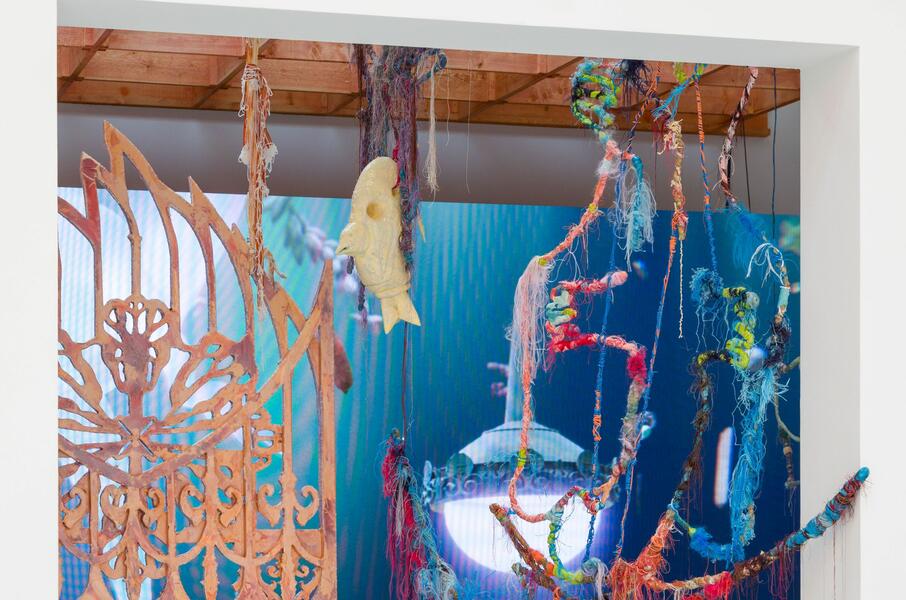
The French Pavilion exhibits works by Franco-Caribbean artists Julien Creuzet, examining water as a force of connection and powerful cultural anachrony. Creuzet explores the role of the sea as a carrier of human and natural testimonies. This kind of trans-oceanic meaning-making stands for interpretative freedom, represented in the immersive nature of this exhibition. Sculpture, video and sound engulf the visitor with the rhythms of confluence. Water becomes a channel, a language and a living resistance to Western domination.
The title of the exhibition Attila cataract your source at the feet of the green peaks will end up in the great sea blue abyss we drowned in the tidal tears of the moon evokes the depth of paradox, and illustrates Creuzet’s irreducible poetic character. It amalgams references to the collective imaginarium of Martinique, forces of nature and Roman mythology; thereby conceiving of a world within the world.
-
Installation views Attila cataract your source at the feet of the green peaks will end up in the great sea blue abyss we drowned in the tidal tears of the moon. La Biennale di Venezia. Images courtesy of Julien Creuzet.
-
Installation views Attila cataract your source at the feet of the green peaks will end up in the great sea blue abyss we drowned in the tidal tears of the moon. La Biennale di Venezia. Images courtesy of Julien Creuzet.
-
Installation views Attila cataract your source at the feet of the green peaks will end up in the great sea blue abyss we drowned in the tidal tears of the moon. La Biennale di Venezia. Images courtesy of Julien Creuzet.
-
Installation views Attila cataract your source at the feet of the green peaks will end up in the great sea blue abyss we drowned in the tidal tears of the moon. La Biennale di Venezia. Images courtesy of Julien Creuzet.
The Greek Pavilion, titled Xirómero / Dryland, focuses on water as a contested resource and a symbol of division. The sound and video installation explores how water scarcity exacerbates geopolitical tensions and territorial conflicts. The agricultural character emphasizes the disparity between shared identity and private ownership, utilizing the cyclical nature of water as a continuously contested resource. The theme of irrigation brings up the conflict of drought, providing a global read to the installation.
Here, water is not serene but unrestful. An object of competition, water represents survival. Throughout the video works and the installation of agricultural objects, the sense of community is contrasted to water as a barrier. This provides an essential shift from the particular to the universal, the located to the foreign.
-
Installation views Xirómero / Dryland. Images courtesy of the Greek Pavilion. Catalogue published by EMΣT | National Museum of Contemporary Art, Athens.
-
Installation views Xirómero / Dryland. Images courtesy of the Greek Pavilion. Catalogue published by EMΣT | National Museum of Contemporary Art, Athens.
-
Installation views Xirómero / Dryland. Images courtesy of the Greek Pavilion. Catalogue published by EMΣT | National Museum of Contemporary Art, Athens.
-
Installation views Xirómero / Dryland. Images courtesy of La Biennale di Venezia.
Otero Torres’ Aguacero is an ephemeral site-specific installation. This complex and layered piece draws on the vernacular architecture of the Embera community, which lives along the Atrato river and yet struggles to access clean, unpolluted water (Carneiro 2024). This tragedy, and the collective efforts made to overcome it, represent the global, rising crisis of the climate, and the fact that marginal communities are affected the most.
The structure of the installation depicts inventiveness but also exposes the fragility of technology. Its title Aguacero (downpour in Spanish) confronts the viewer with the physicality of environmental injustice, highlighting the destructive power of too much or too little water. This meditation, favored by the sound effects of the water cascading, echoes the delicate balance between awe and unease that humans must preserve in its relationship to nature.
-
Installation views Aguacero, Daniel Otero Torres, 2024. Images courtesy of La Biennale di Venezia.
-
Installation views Aguacero, Daniel Otero Torres, 2024. Images courtesy of La Biennale di Venezia.
-
Installation views Aguacero, Daniel Otero Torres, 2024. Images courtesy of La Biennale di Venezia.
-
Installation views Aguacero, Daniel Otero Torres, 2024. Images courtesy of La Biennale di Venezia.
Water, in its various forms, functions and flows, evokes in the 2024 Venice Biennale a sense of regeneration of meaning, conflict and division, and survival. In some sense, what the Greek pavilion exposes, the French pavilion redefines. As in Otero Torres’ installation, we see the shapeshift of water as a site of conflict and dialogue. Following water’s path along the Biennale, we see it becoming equally poetic and political. The conversation runs deep; the forces, urgently essential.
Related Topics
May interest you

Crisis Galería announced the recent acquisition of the painting Cosmovisión Huitoto (2022) by the outstanding indigenous artist Santiago Yahuarcani by the Museum of Modern Art of New York (MoMA). This extraordinary large format work, made with natural dyes and acrylic paint on llanchama, is one of the largest produced by the artist with more than two meters high and four meters wide.
SANTIAGO YAHUARCANI ENTERS THE MoMA COLLECTION
Crisis Galería announced the recent acquisition of the painting Cosmovisión Huitoto (2022) by the outstanding indigenous artist Santiago Yahuarcani by the Museum of Modern Art of New York (MoMA). This extraordinary large format work, made with natural dyes and acrylic paint on llanchama, is one of the largest produced by the artist with more than two meters high and four meters wide.

Crisis Galería announced the recent acquisition of the painting Cosmovisión Huitoto (2022) by the outstanding indigenous artist Santiago Yahuarcani by the Museum of Modern Art of New York (MoMA). This extraordinary large format work, made with natural dyes and acrylic paint on llanchama, is one of the largest produced by the artist with more than two meters high and four meters wide.
SANTIAGO YAHUARCANI ENTERS THE MoMA COLLECTION
Crisis Galería announced the recent acquisition of the painting Cosmovisión Huitoto (2022) by the outstanding indigenous artist Santiago Yahuarcani by the Museum of Modern Art of New York (MoMA). This extraordinary large format work, made with natural dyes and acrylic paint on llanchama, is one of the largest produced by the artist with more than two meters high and four meters wide.
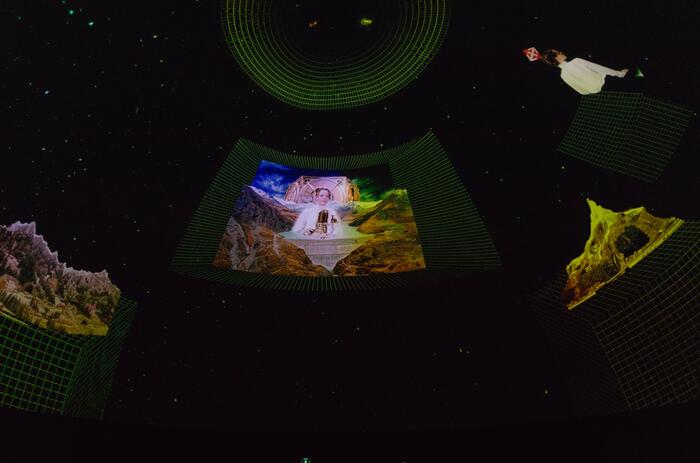
The Venice Biennale 2024 offers an exceptional platform for examining the challenges and opportunities facing the future. The pavilions of Japan, Germany, Switzerland and Hungary trace different forms of looking at and thinking about the world to come, projecting visions of the environment, equilibrium, adaptation, world order and, of course, collective memory.
POSSIBLE FUTURES AT THE VENICE BIENNALE
The Venice Biennale 2024 offers an exceptional platform for examining the challenges and opportunities facing the future. The pavilions of Japan, Germany, Switzerland and Hungary trace different forms of looking at and thinking about the world to come, projecting visions of the environment, equilibrium, adaptation, world order and, of course, collective memory.

Last Thursday, September 26, a ceremony was held at the French Embassy in Paraguay, where Ambassador Pierre-Christian Soccoja awarded art critic Adriana Almada and visual artist Félix Toranzos with the Order of Arts and Letters. Both were part of the third edition of Pinta Sud | ASU.
ADRIANA ALMADA AND FÉLIX TORANZOS: AWARDED BY THE GOVERNMENT OF FRANCE
Last Thursday, September 26, a ceremony was held at the French Embassy in Paraguay, where Ambassador Pierre-Christian Soccoja awarded art critic Adriana Almada and visual artist Félix Toranzos with the Order of Arts and Letters. Both were part of the third edition of Pinta Sud | ASU.
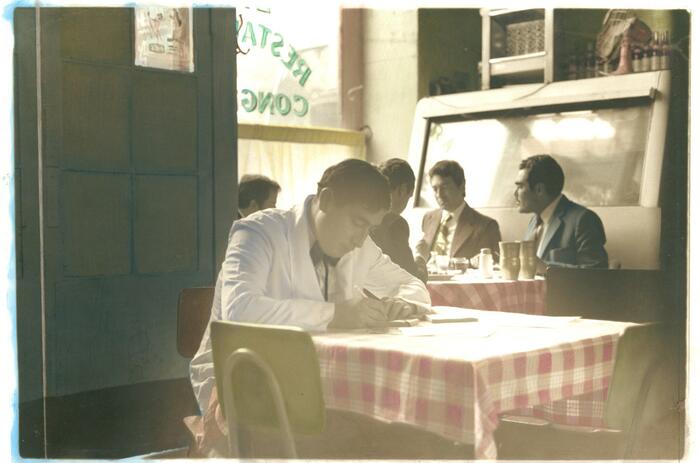
Larivière Foundation opens two exhibitions: Ideas Fijas (Fixed Ideas), by Cecilia Szalkowicz, curated by Mariano Mayer; and Carrusel de melancolías (Carousel of Melancholy), by renowned Chilean photographer Leonora Vicuña, curated by Alexis Fabry.
TWO EXHIBITIONS, TWO WOMEN PHOTOGRAPHERS AT THE LARIVÈRE FOUNDATION
Larivière Foundation opens two exhibitions: Ideas Fijas (Fixed Ideas), by Cecilia Szalkowicz, curated by Mariano Mayer; and Carrusel de melancolías (Carousel of Melancholy), by renowned Chilean photographer Leonora Vicuña, curated by Alexis Fabry.

MUDEC in Milan presented the exhibition Guaymallén, by Argentinian artist La Chola Poblete, winner in 2023 of the prestigious international “Artist of the Year” award dedicated by the Deutsche Bank to contemporary art, and who was recently celebrated with a special mention for her contribution to the 60th International Art Exhibition of the Venice Biennale. The exhibition is curated by Britta Färber, Global Head of Art & Culture at the Bank.
LA CHOLA POBLETE IN MILÁN – THE EXHIBITION “GUAYMALLÉN” ARRIVES AT MUDEC
MUDEC in Milan presented the exhibition Guaymallén, by Argentinian artist La Chola Poblete, winner in 2023 of the prestigious international “Artist of the Year” award dedicated by the Deutsche Bank to contemporary art, and who was recently celebrated with a special mention for her contribution to the 60th International Art Exhibition of the Venice Biennale. The exhibition is curated by Britta Färber, Global Head of Art & Culture at the Bank.

In April 2022, my family suggested we attend the opening of an exhibition by Marisol Escobar, a French-Venezuelan artist whose name was vaguely familiar to me. I wasn’t particularly excited, but wanting to spend time with them, I agreed to go. Little did I know that this visit would leave an incredible mark on me.
ONCE WARHOL’S MUSE, NOW FORGOTTEN IN TIME: MARISOL ESCOBAR
In April 2022, my family suggested we attend the opening of an exhibition by Marisol Escobar, a French-Venezuelan artist whose name was vaguely familiar to me. I wasn’t particularly excited, but wanting to spend time with them, I agreed to go. Little did I know that this visit would leave an incredible mark on me.

Disobedience Archive is a video archive project in constant transformation, linking artistic practices and political action. At the Venice Biennale exhibition, it takes the form of The Zoentrope, a pre-cinematographic machine that gives life to a space that generates new perspectives.
A GUIDE FOR PRACTICING DISOBEDIENCE
Disobedience Archive is a video archive project in constant transformation, linking artistic practices and political action. At the Venice Biennale exhibition, it takes the form of The Zoentrope, a pre-cinematographic machine that gives life to a space that generates new perspectives.
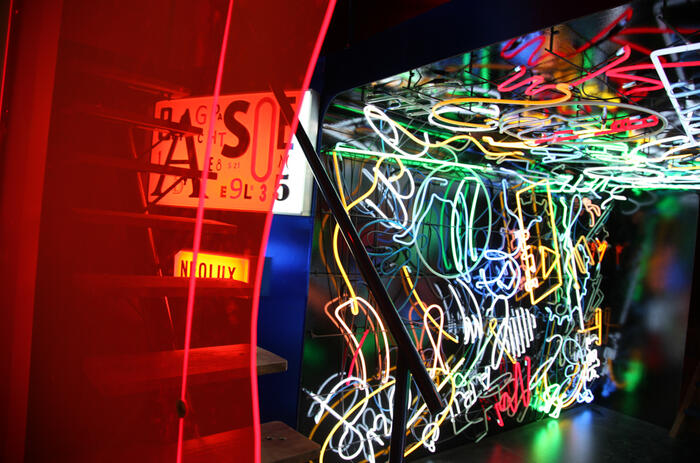
The Museo Moderno announced that La Menesunda, the legendary work by Marta Minujín and Rubén Santantonín –a work originally created in 1965, reconstructed by the Museo de Arte Moderno de Buenos Aires and inaugurated in 2015 and later in 2019 at the New Museum in New York– is on view for the first time in Europe as part of a tour that will show it in four countries.
THE EUROPEAN TOUR OF 'LA MENESUNDA' ACCORDING TO MARTA MINUJÍN
The Museo Moderno announced that La Menesunda, the legendary work by Marta Minujín and Rubén Santantonín –a work originally created in 1965, reconstructed by the Museo de Arte Moderno de Buenos Aires and inaugurated in 2015 and later in 2019 at the New Museum in New York– is on view for the first time in Europe as part of a tour that will show it in four countries.
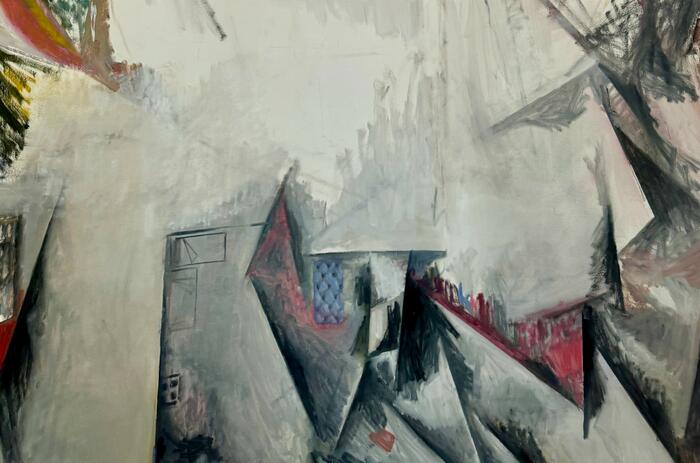
The Argentine artist Guillermo Kuitca was commissioned to create a site-specific work in the chapel of the Hôtel Salé, home of the Musée national Picasso-Paris. The final commission, whose canvas is the walls of the chapel, can now be visited.
GUILLERMO KUITCA: A CUBIST CHAPELL IN THE MUSÉE NATIONAL PICASSO-PARIS
The Argentine artist Guillermo Kuitca was commissioned to create a site-specific work in the chapel of the Hôtel Salé, home of the Musée national Picasso-Paris. The final commission, whose canvas is the walls of the chapel, can now be visited.
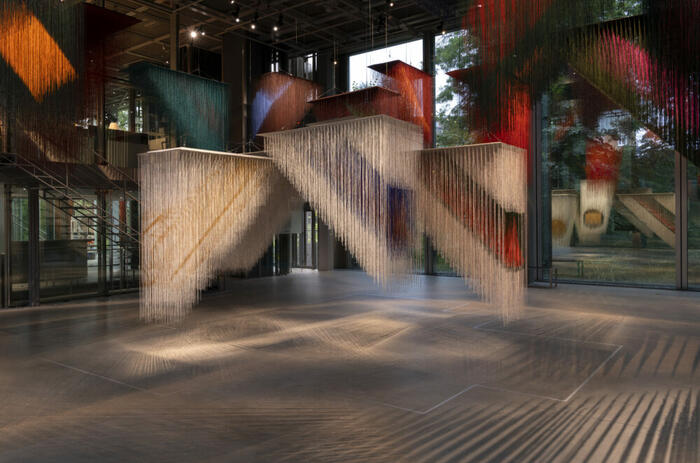
The Fondation Cartier pour l’art contemporain is presenting the first major retrospective in Europe of Olga de Amaral, a key figure of the Colombian art scene and of Fiber Art. The exhibition brings together nearly eighty works made between the 1960s and now, many of which have never been shown before outside of Colombia.
OLGA DE AMARAL IN PARIS: AN EXHIBITION AT THE FONDATION CARTIER
The Fondation Cartier pour l’art contemporain is presenting the first major retrospective in Europe of Olga de Amaral, a key figure of the Colombian art scene and of Fiber Art. The exhibition brings together nearly eighty works made between the 1960s and now, many of which have never been shown before outside of Colombia.
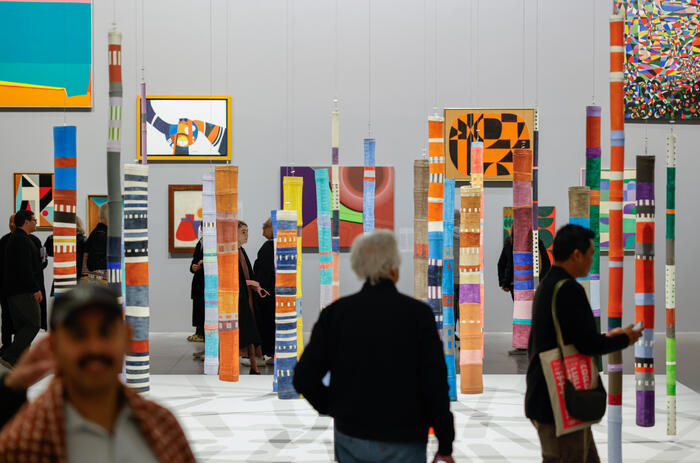
The section dedicated to abstraction in the Strangers Everywhere / Stranieri Ouvunque exhibition at the Venice Biennale 2024 explores how artists from the Global South -particularly those from Latin America- pursued less rigorous forms, undulating lines and a vibrant color palette stemming from references of their own.
THE OTHER FORMS OF ABSTRACTION IN LATIN AMERICA
The section dedicated to abstraction in the Strangers Everywhere / Stranieri Ouvunque exhibition at the Venice Biennale 2024 explores how artists from the Global South -particularly those from Latin America- pursued less rigorous forms, undulating lines and a vibrant color palette stemming from references of their own.
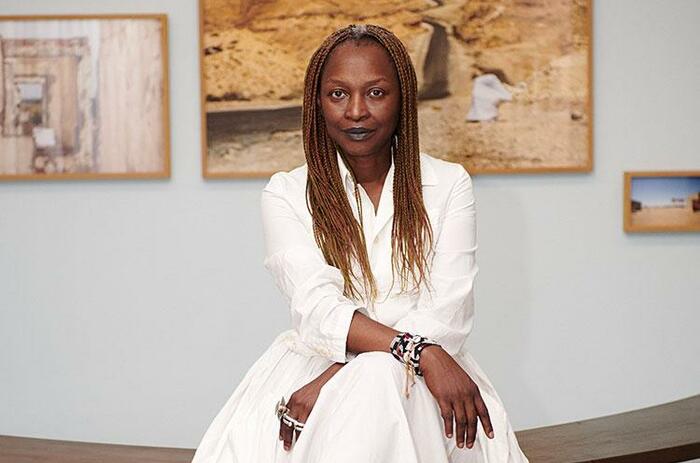
The board of La Biennale di Venezia appointed Koyo Kouoh as Director of the Visual Arts Department, with the specific task of curating the 61st International Art Exhibition to be held in 2026.
KOYO KOUOH IS VENICE BIENNALE 2026’S APPOINTED CURATOR
The board of La Biennale di Venezia appointed Koyo Kouoh as Director of the Visual Arts Department, with the specific task of curating the 61st International Art Exhibition to be held in 2026.

Crisis Galería announced the recent acquisition of the painting Cosmovisión Huitoto (2022) by the outstanding indigenous artist Santiago Yahuarcani by the Museum of Modern Art of New York (MoMA). This extraordinary large format work, made with natural dyes and acrylic paint on llanchama, is one of the largest produced by the artist with more than two meters high and four meters wide.
SANTIAGO YAHUARCANI ENTERS THE MoMA COLLECTION
Crisis Galería announced the recent acquisition of the painting Cosmovisión Huitoto (2022) by the outstanding indigenous artist Santiago Yahuarcani by the Museum of Modern Art of New York (MoMA). This extraordinary large format work, made with natural dyes and acrylic paint on llanchama, is one of the largest produced by the artist with more than two meters high and four meters wide.

The Venice Biennale 2024 offers an exceptional platform for examining the challenges and opportunities facing the future. The pavilions of Japan, Germany, Switzerland and Hungary trace different forms of looking at and thinking about the world to come, projecting visions of the environment, equilibrium, adaptation, world order and, of course, collective memory.
POSSIBLE FUTURES AT THE VENICE BIENNALE
The Venice Biennale 2024 offers an exceptional platform for examining the challenges and opportunities facing the future. The pavilions of Japan, Germany, Switzerland and Hungary trace different forms of looking at and thinking about the world to come, projecting visions of the environment, equilibrium, adaptation, world order and, of course, collective memory.

Last Thursday, September 26, a ceremony was held at the French Embassy in Paraguay, where Ambassador Pierre-Christian Soccoja awarded art critic Adriana Almada and visual artist Félix Toranzos with the Order of Arts and Letters. Both were part of the third edition of Pinta Sud | ASU.
ADRIANA ALMADA AND FÉLIX TORANZOS: AWARDED BY THE GOVERNMENT OF FRANCE
Last Thursday, September 26, a ceremony was held at the French Embassy in Paraguay, where Ambassador Pierre-Christian Soccoja awarded art critic Adriana Almada and visual artist Félix Toranzos with the Order of Arts and Letters. Both were part of the third edition of Pinta Sud | ASU.

Larivière Foundation opens two exhibitions: Ideas Fijas (Fixed Ideas), by Cecilia Szalkowicz, curated by Mariano Mayer; and Carrusel de melancolías (Carousel of Melancholy), by renowned Chilean photographer Leonora Vicuña, curated by Alexis Fabry.
TWO EXHIBITIONS, TWO WOMEN PHOTOGRAPHERS AT THE LARIVÈRE FOUNDATION
Larivière Foundation opens two exhibitions: Ideas Fijas (Fixed Ideas), by Cecilia Szalkowicz, curated by Mariano Mayer; and Carrusel de melancolías (Carousel of Melancholy), by renowned Chilean photographer Leonora Vicuña, curated by Alexis Fabry.

MUDEC in Milan presented the exhibition Guaymallén, by Argentinian artist La Chola Poblete, winner in 2023 of the prestigious international “Artist of the Year” award dedicated by the Deutsche Bank to contemporary art, and who was recently celebrated with a special mention for her contribution to the 60th International Art Exhibition of the Venice Biennale. The exhibition is curated by Britta Färber, Global Head of Art & Culture at the Bank.
LA CHOLA POBLETE IN MILÁN – THE EXHIBITION “GUAYMALLÉN” ARRIVES AT MUDEC
MUDEC in Milan presented the exhibition Guaymallén, by Argentinian artist La Chola Poblete, winner in 2023 of the prestigious international “Artist of the Year” award dedicated by the Deutsche Bank to contemporary art, and who was recently celebrated with a special mention for her contribution to the 60th International Art Exhibition of the Venice Biennale. The exhibition is curated by Britta Färber, Global Head of Art & Culture at the Bank.

In April 2022, my family suggested we attend the opening of an exhibition by Marisol Escobar, a French-Venezuelan artist whose name was vaguely familiar to me. I wasn’t particularly excited, but wanting to spend time with them, I agreed to go. Little did I know that this visit would leave an incredible mark on me.
ONCE WARHOL’S MUSE, NOW FORGOTTEN IN TIME: MARISOL ESCOBAR
In April 2022, my family suggested we attend the opening of an exhibition by Marisol Escobar, a French-Venezuelan artist whose name was vaguely familiar to me. I wasn’t particularly excited, but wanting to spend time with them, I agreed to go. Little did I know that this visit would leave an incredible mark on me.

Disobedience Archive is a video archive project in constant transformation, linking artistic practices and political action. At the Venice Biennale exhibition, it takes the form of The Zoentrope, a pre-cinematographic machine that gives life to a space that generates new perspectives.
A GUIDE FOR PRACTICING DISOBEDIENCE
Disobedience Archive is a video archive project in constant transformation, linking artistic practices and political action. At the Venice Biennale exhibition, it takes the form of The Zoentrope, a pre-cinematographic machine that gives life to a space that generates new perspectives.

The Museo Moderno announced that La Menesunda, the legendary work by Marta Minujín and Rubén Santantonín –a work originally created in 1965, reconstructed by the Museo de Arte Moderno de Buenos Aires and inaugurated in 2015 and later in 2019 at the New Museum in New York– is on view for the first time in Europe as part of a tour that will show it in four countries.
THE EUROPEAN TOUR OF 'LA MENESUNDA' ACCORDING TO MARTA MINUJÍN
The Museo Moderno announced that La Menesunda, the legendary work by Marta Minujín and Rubén Santantonín –a work originally created in 1965, reconstructed by the Museo de Arte Moderno de Buenos Aires and inaugurated in 2015 and later in 2019 at the New Museum in New York– is on view for the first time in Europe as part of a tour that will show it in four countries.

The Argentine artist Guillermo Kuitca was commissioned to create a site-specific work in the chapel of the Hôtel Salé, home of the Musée national Picasso-Paris. The final commission, whose canvas is the walls of the chapel, can now be visited.
GUILLERMO KUITCA: A CUBIST CHAPELL IN THE MUSÉE NATIONAL PICASSO-PARIS
The Argentine artist Guillermo Kuitca was commissioned to create a site-specific work in the chapel of the Hôtel Salé, home of the Musée national Picasso-Paris. The final commission, whose canvas is the walls of the chapel, can now be visited.

The Fondation Cartier pour l’art contemporain is presenting the first major retrospective in Europe of Olga de Amaral, a key figure of the Colombian art scene and of Fiber Art. The exhibition brings together nearly eighty works made between the 1960s and now, many of which have never been shown before outside of Colombia.
OLGA DE AMARAL IN PARIS: AN EXHIBITION AT THE FONDATION CARTIER
The Fondation Cartier pour l’art contemporain is presenting the first major retrospective in Europe of Olga de Amaral, a key figure of the Colombian art scene and of Fiber Art. The exhibition brings together nearly eighty works made between the 1960s and now, many of which have never been shown before outside of Colombia.

The section dedicated to abstraction in the Strangers Everywhere / Stranieri Ouvunque exhibition at the Venice Biennale 2024 explores how artists from the Global South -particularly those from Latin America- pursued less rigorous forms, undulating lines and a vibrant color palette stemming from references of their own.
THE OTHER FORMS OF ABSTRACTION IN LATIN AMERICA
The section dedicated to abstraction in the Strangers Everywhere / Stranieri Ouvunque exhibition at the Venice Biennale 2024 explores how artists from the Global South -particularly those from Latin America- pursued less rigorous forms, undulating lines and a vibrant color palette stemming from references of their own.

The board of La Biennale di Venezia appointed Koyo Kouoh as Director of the Visual Arts Department, with the specific task of curating the 61st International Art Exhibition to be held in 2026.
KOYO KOUOH IS VENICE BIENNALE 2026’S APPOINTED CURATOR
The board of La Biennale di Venezia appointed Koyo Kouoh as Director of the Visual Arts Department, with the specific task of curating the 61st International Art Exhibition to be held in 2026.

Crisis Galería announced the recent acquisition of the painting Cosmovisión Huitoto (2022) by the outstanding indigenous artist Santiago Yahuarcani by the Museum of Modern Art of New York (MoMA). This extraordinary large format work, made with natural dyes and acrylic paint on llanchama, is one of the largest produced by the artist with more than two meters high and four meters wide.
SANTIAGO YAHUARCANI ENTERS THE MoMA COLLECTION
Crisis Galería announced the recent acquisition of the painting Cosmovisión Huitoto (2022) by the outstanding indigenous artist Santiago Yahuarcani by the Museum of Modern Art of New York (MoMA). This extraordinary large format work, made with natural dyes and acrylic paint on llanchama, is one of the largest produced by the artist with more than two meters high and four meters wide.

The Venice Biennale 2024 offers an exceptional platform for examining the challenges and opportunities facing the future. The pavilions of Japan, Germany, Switzerland and Hungary trace different forms of looking at and thinking about the world to come, projecting visions of the environment, equilibrium, adaptation, world order and, of course, collective memory.
POSSIBLE FUTURES AT THE VENICE BIENNALE
The Venice Biennale 2024 offers an exceptional platform for examining the challenges and opportunities facing the future. The pavilions of Japan, Germany, Switzerland and Hungary trace different forms of looking at and thinking about the world to come, projecting visions of the environment, equilibrium, adaptation, world order and, of course, collective memory.

Last Thursday, September 26, a ceremony was held at the French Embassy in Paraguay, where Ambassador Pierre-Christian Soccoja awarded art critic Adriana Almada and visual artist Félix Toranzos with the Order of Arts and Letters. Both were part of the third edition of Pinta Sud | ASU.
ADRIANA ALMADA AND FÉLIX TORANZOS: AWARDED BY THE GOVERNMENT OF FRANCE
Last Thursday, September 26, a ceremony was held at the French Embassy in Paraguay, where Ambassador Pierre-Christian Soccoja awarded art critic Adriana Almada and visual artist Félix Toranzos with the Order of Arts and Letters. Both were part of the third edition of Pinta Sud | ASU.

Larivière Foundation opens two exhibitions: Ideas Fijas (Fixed Ideas), by Cecilia Szalkowicz, curated by Mariano Mayer; and Carrusel de melancolías (Carousel of Melancholy), by renowned Chilean photographer Leonora Vicuña, curated by Alexis Fabry.
TWO EXHIBITIONS, TWO WOMEN PHOTOGRAPHERS AT THE LARIVÈRE FOUNDATION
Larivière Foundation opens two exhibitions: Ideas Fijas (Fixed Ideas), by Cecilia Szalkowicz, curated by Mariano Mayer; and Carrusel de melancolías (Carousel of Melancholy), by renowned Chilean photographer Leonora Vicuña, curated by Alexis Fabry.

MUDEC in Milan presented the exhibition Guaymallén, by Argentinian artist La Chola Poblete, winner in 2023 of the prestigious international “Artist of the Year” award dedicated by the Deutsche Bank to contemporary art, and who was recently celebrated with a special mention for her contribution to the 60th International Art Exhibition of the Venice Biennale. The exhibition is curated by Britta Färber, Global Head of Art & Culture at the Bank.
LA CHOLA POBLETE IN MILÁN – THE EXHIBITION “GUAYMALLÉN” ARRIVES AT MUDEC
MUDEC in Milan presented the exhibition Guaymallén, by Argentinian artist La Chola Poblete, winner in 2023 of the prestigious international “Artist of the Year” award dedicated by the Deutsche Bank to contemporary art, and who was recently celebrated with a special mention for her contribution to the 60th International Art Exhibition of the Venice Biennale. The exhibition is curated by Britta Färber, Global Head of Art & Culture at the Bank.

In April 2022, my family suggested we attend the opening of an exhibition by Marisol Escobar, a French-Venezuelan artist whose name was vaguely familiar to me. I wasn’t particularly excited, but wanting to spend time with them, I agreed to go. Little did I know that this visit would leave an incredible mark on me.
ONCE WARHOL’S MUSE, NOW FORGOTTEN IN TIME: MARISOL ESCOBAR
In April 2022, my family suggested we attend the opening of an exhibition by Marisol Escobar, a French-Venezuelan artist whose name was vaguely familiar to me. I wasn’t particularly excited, but wanting to spend time with them, I agreed to go. Little did I know that this visit would leave an incredible mark on me.

Disobedience Archive is a video archive project in constant transformation, linking artistic practices and political action. At the Venice Biennale exhibition, it takes the form of The Zoentrope, a pre-cinematographic machine that gives life to a space that generates new perspectives.
A GUIDE FOR PRACTICING DISOBEDIENCE
Disobedience Archive is a video archive project in constant transformation, linking artistic practices and political action. At the Venice Biennale exhibition, it takes the form of The Zoentrope, a pre-cinematographic machine that gives life to a space that generates new perspectives.

The Museo Moderno announced that La Menesunda, the legendary work by Marta Minujín and Rubén Santantonín –a work originally created in 1965, reconstructed by the Museo de Arte Moderno de Buenos Aires and inaugurated in 2015 and later in 2019 at the New Museum in New York– is on view for the first time in Europe as part of a tour that will show it in four countries.
THE EUROPEAN TOUR OF 'LA MENESUNDA' ACCORDING TO MARTA MINUJÍN
The Museo Moderno announced that La Menesunda, the legendary work by Marta Minujín and Rubén Santantonín –a work originally created in 1965, reconstructed by the Museo de Arte Moderno de Buenos Aires and inaugurated in 2015 and later in 2019 at the New Museum in New York– is on view for the first time in Europe as part of a tour that will show it in four countries.

The Argentine artist Guillermo Kuitca was commissioned to create a site-specific work in the chapel of the Hôtel Salé, home of the Musée national Picasso-Paris. The final commission, whose canvas is the walls of the chapel, can now be visited.
GUILLERMO KUITCA: A CUBIST CHAPELL IN THE MUSÉE NATIONAL PICASSO-PARIS
The Argentine artist Guillermo Kuitca was commissioned to create a site-specific work in the chapel of the Hôtel Salé, home of the Musée national Picasso-Paris. The final commission, whose canvas is the walls of the chapel, can now be visited.

The Fondation Cartier pour l’art contemporain is presenting the first major retrospective in Europe of Olga de Amaral, a key figure of the Colombian art scene and of Fiber Art. The exhibition brings together nearly eighty works made between the 1960s and now, many of which have never been shown before outside of Colombia.
OLGA DE AMARAL IN PARIS: AN EXHIBITION AT THE FONDATION CARTIER
The Fondation Cartier pour l’art contemporain is presenting the first major retrospective in Europe of Olga de Amaral, a key figure of the Colombian art scene and of Fiber Art. The exhibition brings together nearly eighty works made between the 1960s and now, many of which have never been shown before outside of Colombia.

The section dedicated to abstraction in the Strangers Everywhere / Stranieri Ouvunque exhibition at the Venice Biennale 2024 explores how artists from the Global South -particularly those from Latin America- pursued less rigorous forms, undulating lines and a vibrant color palette stemming from references of their own.
THE OTHER FORMS OF ABSTRACTION IN LATIN AMERICA
The section dedicated to abstraction in the Strangers Everywhere / Stranieri Ouvunque exhibition at the Venice Biennale 2024 explores how artists from the Global South -particularly those from Latin America- pursued less rigorous forms, undulating lines and a vibrant color palette stemming from references of their own.

The board of La Biennale di Venezia appointed Koyo Kouoh as Director of the Visual Arts Department, with the specific task of curating the 61st International Art Exhibition to be held in 2026.
KOYO KOUOH IS VENICE BIENNALE 2026’S APPOINTED CURATOR
The board of La Biennale di Venezia appointed Koyo Kouoh as Director of the Visual Arts Department, with the specific task of curating the 61st International Art Exhibition to be held in 2026.

Crisis Galería announced the recent acquisition of the painting Cosmovisión Huitoto (2022) by the outstanding indigenous artist Santiago Yahuarcani by the Museum of Modern Art of New York (MoMA). This extraordinary large format work, made with natural dyes and acrylic paint on llanchama, is one of the largest produced by the artist with more than two meters high and four meters wide.
SANTIAGO YAHUARCANI ENTERS THE MoMA COLLECTION
Crisis Galería announced the recent acquisition of the painting Cosmovisión Huitoto (2022) by the outstanding indigenous artist Santiago Yahuarcani by the Museum of Modern Art of New York (MoMA). This extraordinary large format work, made with natural dyes and acrylic paint on llanchama, is one of the largest produced by the artist with more than two meters high and four meters wide.

The Venice Biennale 2024 offers an exceptional platform for examining the challenges and opportunities facing the future. The pavilions of Japan, Germany, Switzerland and Hungary trace different forms of looking at and thinking about the world to come, projecting visions of the environment, equilibrium, adaptation, world order and, of course, collective memory.
POSSIBLE FUTURES AT THE VENICE BIENNALE
The Venice Biennale 2024 offers an exceptional platform for examining the challenges and opportunities facing the future. The pavilions of Japan, Germany, Switzerland and Hungary trace different forms of looking at and thinking about the world to come, projecting visions of the environment, equilibrium, adaptation, world order and, of course, collective memory.

Last Thursday, September 26, a ceremony was held at the French Embassy in Paraguay, where Ambassador Pierre-Christian Soccoja awarded art critic Adriana Almada and visual artist Félix Toranzos with the Order of Arts and Letters. Both were part of the third edition of Pinta Sud | ASU.
ADRIANA ALMADA AND FÉLIX TORANZOS: AWARDED BY THE GOVERNMENT OF FRANCE
Last Thursday, September 26, a ceremony was held at the French Embassy in Paraguay, where Ambassador Pierre-Christian Soccoja awarded art critic Adriana Almada and visual artist Félix Toranzos with the Order of Arts and Letters. Both were part of the third edition of Pinta Sud | ASU.

Larivière Foundation opens two exhibitions: Ideas Fijas (Fixed Ideas), by Cecilia Szalkowicz, curated by Mariano Mayer; and Carrusel de melancolías (Carousel of Melancholy), by renowned Chilean photographer Leonora Vicuña, curated by Alexis Fabry.
TWO EXHIBITIONS, TWO WOMEN PHOTOGRAPHERS AT THE LARIVÈRE FOUNDATION
Larivière Foundation opens two exhibitions: Ideas Fijas (Fixed Ideas), by Cecilia Szalkowicz, curated by Mariano Mayer; and Carrusel de melancolías (Carousel of Melancholy), by renowned Chilean photographer Leonora Vicuña, curated by Alexis Fabry.

MUDEC in Milan presented the exhibition Guaymallén, by Argentinian artist La Chola Poblete, winner in 2023 of the prestigious international “Artist of the Year” award dedicated by the Deutsche Bank to contemporary art, and who was recently celebrated with a special mention for her contribution to the 60th International Art Exhibition of the Venice Biennale. The exhibition is curated by Britta Färber, Global Head of Art & Culture at the Bank.
LA CHOLA POBLETE IN MILÁN – THE EXHIBITION “GUAYMALLÉN” ARRIVES AT MUDEC
MUDEC in Milan presented the exhibition Guaymallén, by Argentinian artist La Chola Poblete, winner in 2023 of the prestigious international “Artist of the Year” award dedicated by the Deutsche Bank to contemporary art, and who was recently celebrated with a special mention for her contribution to the 60th International Art Exhibition of the Venice Biennale. The exhibition is curated by Britta Färber, Global Head of Art & Culture at the Bank.

In April 2022, my family suggested we attend the opening of an exhibition by Marisol Escobar, a French-Venezuelan artist whose name was vaguely familiar to me. I wasn’t particularly excited, but wanting to spend time with them, I agreed to go. Little did I know that this visit would leave an incredible mark on me.
ONCE WARHOL’S MUSE, NOW FORGOTTEN IN TIME: MARISOL ESCOBAR
In April 2022, my family suggested we attend the opening of an exhibition by Marisol Escobar, a French-Venezuelan artist whose name was vaguely familiar to me. I wasn’t particularly excited, but wanting to spend time with them, I agreed to go. Little did I know that this visit would leave an incredible mark on me.

Disobedience Archive is a video archive project in constant transformation, linking artistic practices and political action. At the Venice Biennale exhibition, it takes the form of The Zoentrope, a pre-cinematographic machine that gives life to a space that generates new perspectives.
A GUIDE FOR PRACTICING DISOBEDIENCE
Disobedience Archive is a video archive project in constant transformation, linking artistic practices and political action. At the Venice Biennale exhibition, it takes the form of The Zoentrope, a pre-cinematographic machine that gives life to a space that generates new perspectives.

The Museo Moderno announced that La Menesunda, the legendary work by Marta Minujín and Rubén Santantonín –a work originally created in 1965, reconstructed by the Museo de Arte Moderno de Buenos Aires and inaugurated in 2015 and later in 2019 at the New Museum in New York– is on view for the first time in Europe as part of a tour that will show it in four countries.
THE EUROPEAN TOUR OF 'LA MENESUNDA' ACCORDING TO MARTA MINUJÍN
The Museo Moderno announced that La Menesunda, the legendary work by Marta Minujín and Rubén Santantonín –a work originally created in 1965, reconstructed by the Museo de Arte Moderno de Buenos Aires and inaugurated in 2015 and later in 2019 at the New Museum in New York– is on view for the first time in Europe as part of a tour that will show it in four countries.

The Argentine artist Guillermo Kuitca was commissioned to create a site-specific work in the chapel of the Hôtel Salé, home of the Musée national Picasso-Paris. The final commission, whose canvas is the walls of the chapel, can now be visited.
GUILLERMO KUITCA: A CUBIST CHAPELL IN THE MUSÉE NATIONAL PICASSO-PARIS
The Argentine artist Guillermo Kuitca was commissioned to create a site-specific work in the chapel of the Hôtel Salé, home of the Musée national Picasso-Paris. The final commission, whose canvas is the walls of the chapel, can now be visited.

The Fondation Cartier pour l’art contemporain is presenting the first major retrospective in Europe of Olga de Amaral, a key figure of the Colombian art scene and of Fiber Art. The exhibition brings together nearly eighty works made between the 1960s and now, many of which have never been shown before outside of Colombia.
OLGA DE AMARAL IN PARIS: AN EXHIBITION AT THE FONDATION CARTIER
The Fondation Cartier pour l’art contemporain is presenting the first major retrospective in Europe of Olga de Amaral, a key figure of the Colombian art scene and of Fiber Art. The exhibition brings together nearly eighty works made between the 1960s and now, many of which have never been shown before outside of Colombia.

The section dedicated to abstraction in the Strangers Everywhere / Stranieri Ouvunque exhibition at the Venice Biennale 2024 explores how artists from the Global South -particularly those from Latin America- pursued less rigorous forms, undulating lines and a vibrant color palette stemming from references of their own.
THE OTHER FORMS OF ABSTRACTION IN LATIN AMERICA
The section dedicated to abstraction in the Strangers Everywhere / Stranieri Ouvunque exhibition at the Venice Biennale 2024 explores how artists from the Global South -particularly those from Latin America- pursued less rigorous forms, undulating lines and a vibrant color palette stemming from references of their own.

The board of La Biennale di Venezia appointed Koyo Kouoh as Director of the Visual Arts Department, with the specific task of curating the 61st International Art Exhibition to be held in 2026.
KOYO KOUOH IS VENICE BIENNALE 2026’S APPOINTED CURATOR
The board of La Biennale di Venezia appointed Koyo Kouoh as Director of the Visual Arts Department, with the specific task of curating the 61st International Art Exhibition to be held in 2026.

Crisis Galería announced the recent acquisition of the painting Cosmovisión Huitoto (2022) by the outstanding indigenous artist Santiago Yahuarcani by the Museum of Modern Art of New York (MoMA). This extraordinary large format work, made with natural dyes and acrylic paint on llanchama, is one of the largest produced by the artist with more than two meters high and four meters wide.
SANTIAGO YAHUARCANI ENTERS THE MoMA COLLECTION
Crisis Galería announced the recent acquisition of the painting Cosmovisión Huitoto (2022) by the outstanding indigenous artist Santiago Yahuarcani by the Museum of Modern Art of New York (MoMA). This extraordinary large format work, made with natural dyes and acrylic paint on llanchama, is one of the largest produced by the artist with more than two meters high and four meters wide.

The Venice Biennale 2024 offers an exceptional platform for examining the challenges and opportunities facing the future. The pavilions of Japan, Germany, Switzerland and Hungary trace different forms of looking at and thinking about the world to come, projecting visions of the environment, equilibrium, adaptation, world order and, of course, collective memory.
POSSIBLE FUTURES AT THE VENICE BIENNALE
The Venice Biennale 2024 offers an exceptional platform for examining the challenges and opportunities facing the future. The pavilions of Japan, Germany, Switzerland and Hungary trace different forms of looking at and thinking about the world to come, projecting visions of the environment, equilibrium, adaptation, world order and, of course, collective memory.

Last Thursday, September 26, a ceremony was held at the French Embassy in Paraguay, where Ambassador Pierre-Christian Soccoja awarded art critic Adriana Almada and visual artist Félix Toranzos with the Order of Arts and Letters. Both were part of the third edition of Pinta Sud | ASU.
ADRIANA ALMADA AND FÉLIX TORANZOS: AWARDED BY THE GOVERNMENT OF FRANCE
Last Thursday, September 26, a ceremony was held at the French Embassy in Paraguay, where Ambassador Pierre-Christian Soccoja awarded art critic Adriana Almada and visual artist Félix Toranzos with the Order of Arts and Letters. Both were part of the third edition of Pinta Sud | ASU.

Larivière Foundation opens two exhibitions: Ideas Fijas (Fixed Ideas), by Cecilia Szalkowicz, curated by Mariano Mayer; and Carrusel de melancolías (Carousel of Melancholy), by renowned Chilean photographer Leonora Vicuña, curated by Alexis Fabry.
TWO EXHIBITIONS, TWO WOMEN PHOTOGRAPHERS AT THE LARIVÈRE FOUNDATION
Larivière Foundation opens two exhibitions: Ideas Fijas (Fixed Ideas), by Cecilia Szalkowicz, curated by Mariano Mayer; and Carrusel de melancolías (Carousel of Melancholy), by renowned Chilean photographer Leonora Vicuña, curated by Alexis Fabry.

MUDEC in Milan presented the exhibition Guaymallén, by Argentinian artist La Chola Poblete, winner in 2023 of the prestigious international “Artist of the Year” award dedicated by the Deutsche Bank to contemporary art, and who was recently celebrated with a special mention for her contribution to the 60th International Art Exhibition of the Venice Biennale. The exhibition is curated by Britta Färber, Global Head of Art & Culture at the Bank.
LA CHOLA POBLETE IN MILÁN – THE EXHIBITION “GUAYMALLÉN” ARRIVES AT MUDEC
MUDEC in Milan presented the exhibition Guaymallén, by Argentinian artist La Chola Poblete, winner in 2023 of the prestigious international “Artist of the Year” award dedicated by the Deutsche Bank to contemporary art, and who was recently celebrated with a special mention for her contribution to the 60th International Art Exhibition of the Venice Biennale. The exhibition is curated by Britta Färber, Global Head of Art & Culture at the Bank.

In April 2022, my family suggested we attend the opening of an exhibition by Marisol Escobar, a French-Venezuelan artist whose name was vaguely familiar to me. I wasn’t particularly excited, but wanting to spend time with them, I agreed to go. Little did I know that this visit would leave an incredible mark on me.
ONCE WARHOL’S MUSE, NOW FORGOTTEN IN TIME: MARISOL ESCOBAR
In April 2022, my family suggested we attend the opening of an exhibition by Marisol Escobar, a French-Venezuelan artist whose name was vaguely familiar to me. I wasn’t particularly excited, but wanting to spend time with them, I agreed to go. Little did I know that this visit would leave an incredible mark on me.

Disobedience Archive is a video archive project in constant transformation, linking artistic practices and political action. At the Venice Biennale exhibition, it takes the form of The Zoentrope, a pre-cinematographic machine that gives life to a space that generates new perspectives.
A GUIDE FOR PRACTICING DISOBEDIENCE
Disobedience Archive is a video archive project in constant transformation, linking artistic practices and political action. At the Venice Biennale exhibition, it takes the form of The Zoentrope, a pre-cinematographic machine that gives life to a space that generates new perspectives.

The Museo Moderno announced that La Menesunda, the legendary work by Marta Minujín and Rubén Santantonín –a work originally created in 1965, reconstructed by the Museo de Arte Moderno de Buenos Aires and inaugurated in 2015 and later in 2019 at the New Museum in New York– is on view for the first time in Europe as part of a tour that will show it in four countries.
THE EUROPEAN TOUR OF 'LA MENESUNDA' ACCORDING TO MARTA MINUJÍN
The Museo Moderno announced that La Menesunda, the legendary work by Marta Minujín and Rubén Santantonín –a work originally created in 1965, reconstructed by the Museo de Arte Moderno de Buenos Aires and inaugurated in 2015 and later in 2019 at the New Museum in New York– is on view for the first time in Europe as part of a tour that will show it in four countries.

The Argentine artist Guillermo Kuitca was commissioned to create a site-specific work in the chapel of the Hôtel Salé, home of the Musée national Picasso-Paris. The final commission, whose canvas is the walls of the chapel, can now be visited.
GUILLERMO KUITCA: A CUBIST CHAPELL IN THE MUSÉE NATIONAL PICASSO-PARIS
The Argentine artist Guillermo Kuitca was commissioned to create a site-specific work in the chapel of the Hôtel Salé, home of the Musée national Picasso-Paris. The final commission, whose canvas is the walls of the chapel, can now be visited.

The Fondation Cartier pour l’art contemporain is presenting the first major retrospective in Europe of Olga de Amaral, a key figure of the Colombian art scene and of Fiber Art. The exhibition brings together nearly eighty works made between the 1960s and now, many of which have never been shown before outside of Colombia.
OLGA DE AMARAL IN PARIS: AN EXHIBITION AT THE FONDATION CARTIER
The Fondation Cartier pour l’art contemporain is presenting the first major retrospective in Europe of Olga de Amaral, a key figure of the Colombian art scene and of Fiber Art. The exhibition brings together nearly eighty works made between the 1960s and now, many of which have never been shown before outside of Colombia.

The section dedicated to abstraction in the Strangers Everywhere / Stranieri Ouvunque exhibition at the Venice Biennale 2024 explores how artists from the Global South -particularly those from Latin America- pursued less rigorous forms, undulating lines and a vibrant color palette stemming from references of their own.
THE OTHER FORMS OF ABSTRACTION IN LATIN AMERICA
The section dedicated to abstraction in the Strangers Everywhere / Stranieri Ouvunque exhibition at the Venice Biennale 2024 explores how artists from the Global South -particularly those from Latin America- pursued less rigorous forms, undulating lines and a vibrant color palette stemming from references of their own.

The board of La Biennale di Venezia appointed Koyo Kouoh as Director of the Visual Arts Department, with the specific task of curating the 61st International Art Exhibition to be held in 2026.
KOYO KOUOH IS VENICE BIENNALE 2026’S APPOINTED CURATOR
The board of La Biennale di Venezia appointed Koyo Kouoh as Director of the Visual Arts Department, with the specific task of curating the 61st International Art Exhibition to be held in 2026.




